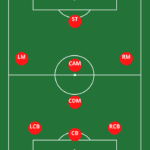- Last Updated -
9v9 Soccer Positions and Formations
Youth soccer is a sport that is always evolving and coaches are constantly seeking ways to help their players reach their potential.
One effective method to achieve this goal is, by implementing 9v9 soccer formations tailored for youth players. These formations are specifically crafted for fields commonly found in youth soccer making them ideal for developing players.
By grasping and employing these formations coaches, players and parents can establish an tactical approach to the game enabling players to enhance their understanding of both the game itself and their roles on the field.
Consequently players can enhance their skills and teamwork leading to success, on the field.
As a coach, having fewer players on the field in 9v9 soccer allows for more experimentation with different positions and strategies, which can help players develop their skills and understanding of the game.
One popular formation used in more competitive league situations is the 3-1-3-1 formation, which is just one of several formations coaches can choose from to maximize their team’s potential.
In this post, we will explore some of the most popular 9v9 soccer formations, providing valuable insights for coaches, parents, and players alike.
What are 9v9 Soccer Formations?
A 9v9 soccer formation refers to how the players are arranged on the field during a game of soccer with nine players on each team. In this variation of the traditional 11v11 game, teams are reduced to nine players each on the field at one time.
The 9v9 game is primarily played in youth leagues, with U9 to U13 age groups being the most common.
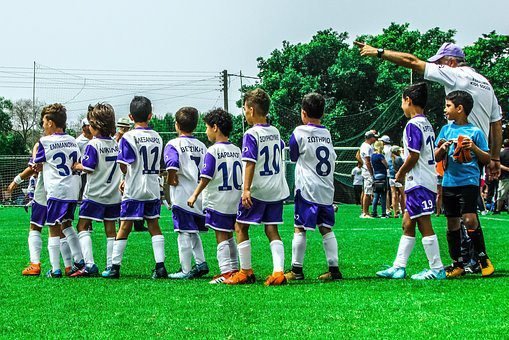
For new players and parents, understanding the 9v9 soccer game can be a challenge. However, there are different variations of 9v9 soccer formations that coaches can use to help teams succeed on the field.
The field lines for youth soccer in a 9v9 game are the same as for 11v11 and are typically divided into three main groups: defenders, midfielders, and forwards or strikers.
Coaches can use different formations to take advantage of their players’ strengths and weaknesses.
One popular formation is the 3-3-2, which features three defenders and three midfielders in front of them, making it difficult for the opposition to score.
Additionally, with two strikers up front, the team still offers a threat in front of the goal. Another commonly used formation is the 4-2-2, which mimics the formation seen in 11v11 games.
It’s important to note that 9v9 soccer is different from 11v11, as players will have to adjust to a larger field. Certain positions will be running much more than when playing 9v9.
Players who dominate a smaller field because of their speed will be forced to adapt and learn the benefits of positioning.
Overall, 9v9 soccer is a great way for youth coaches to teach their players how to work together and improve their skills in a fun and challenging environment.
With the right formation and strategy, teams can become more cohesive and effective on the field.
So Lets Take A Look At Some 9v9 soccer Formations And The Position Numbers That Go With It
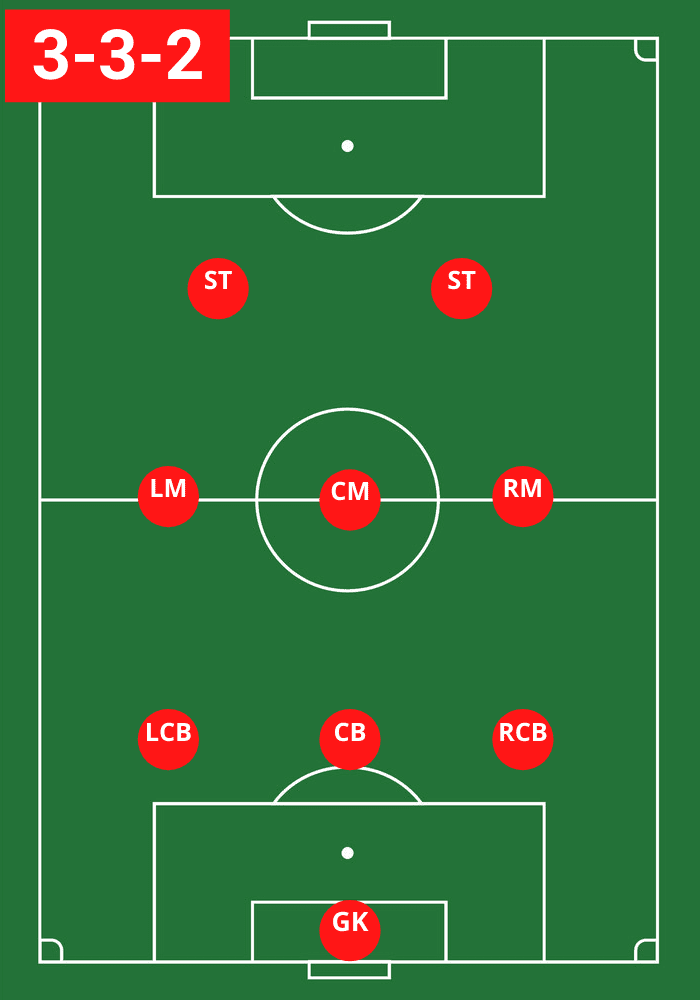
3-3-2 The Classic 9v9
The 3-3-2 formation is a classic choice for coaching youth soccer players in a 9v9 setting. It offers a balanced approach to both defense and offense, making it easy for young players to understand and execute.
The wide players in this formation have room to move and the team can quickly recover possession if the ball is lost.
However, it is important to note that this formation may not be the most aggressive in terms of attacking play and requires a strong midfield to achieve offensive success.
Additionally, the formation relies on the support of the left and right center backs to move the ball forward effectively.
9v9 – The Lone Front-Man
(4-3-1)
The 4-3-1 formation is a popular choice among youth soccer coaches at the U11 and U12 age levels.
This formation provides a solid defensive foundation while also promoting natural passing triangles and diamonds to develop within the team.
Additionally, it can be easily adapted to the 4-3-3 formation when transitioning to 11v11 play.
When using this formation, it is typical for coaches to place their strongest players in central positions such as the left and right center backs, center midfielders, and strikers.
The midfield is designed to support the attack and typically includes right and left midfielders playing as attacking midfielders and the center midfielder playing as a defensive midfielder.
This helps to balance the team’s defensive and offensive capabilities, providing a solid foundation for success on the field.
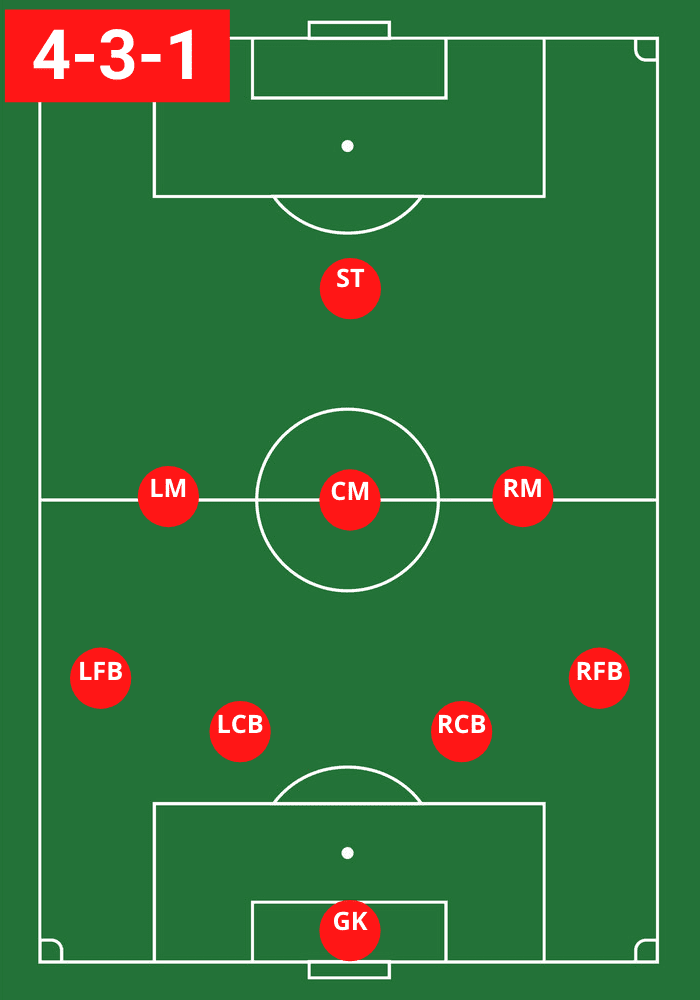
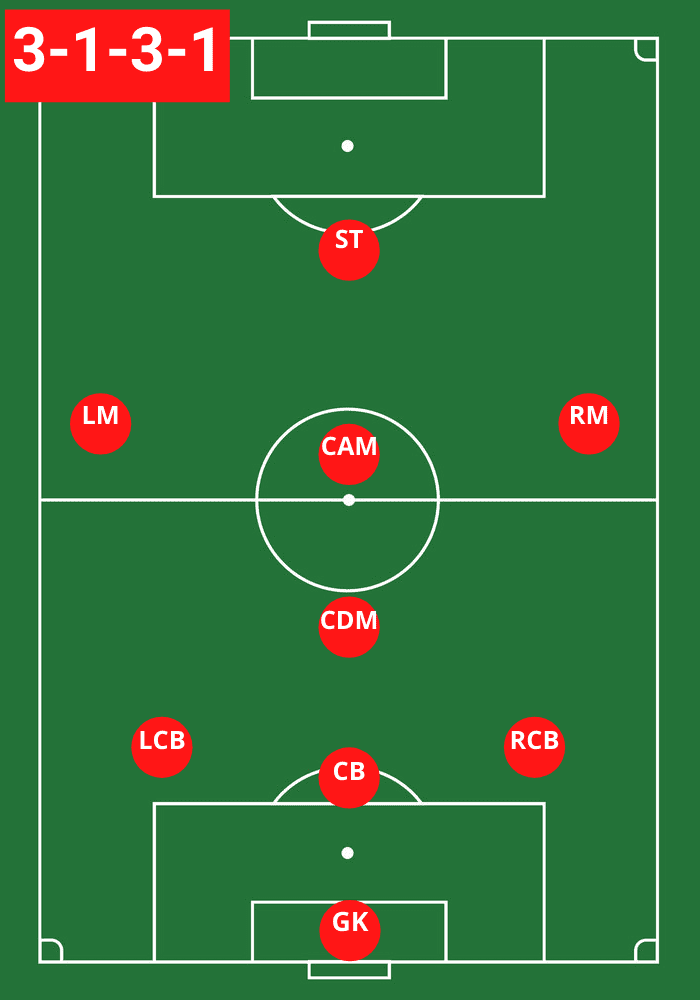
9v9 – The Lone Front-Man W/ Defensive Midfielder
(3-1-3-1)
The 3-1-3-1 formation in 9v9 soccer is a variation of the 4-1-4-1 formation commonly used in 11v11.
This formation offers a balance of defensive stability and attacking potential by utilizing a lone front-man with a defensive midfielder to provide support.
The key positions in this formation are the left and right defenders who must be able to handle the ball well and push forward when needed.
The wingers or attacking midfielders play a crucial role in providing width and support in both attack and defense.
The central defensive midfielder, also known as the CDM, is the pivotal player in this formation.
This player must be able to win the ball and distribute it effectively to control the game. This formation is typically used by teams with advanced technical skills.
Which 9v9 formation Is Best?
In conclusion,
9v9 soccer is a great way for youth coaches to teach their players how to work together and improve their skills in a fun and challenging environment.
With the right formation and strategy, teams can become more cohesive and effective on the field. Coaches can choose from a variety of formations, including the 3-3-2, 4-3-1, and 3-1-3-1.
Each formation has its strengths and weaknesses and coaches should choose the formation that best suits their players’ strengths and weaknesses.
The 3-3-2 formation is a classic choice for coaching youth soccer players in a 9v9 setting, providing a balanced approach to both defense and offense.
The 4-3-1 formation provides a solid defensive foundation while also promoting natural passing triangles and diamonds to develop within the team.
The 3-1-3-1 formation offers a balance of defensive stability and attacking potential by utilizing a lone front man with a defensive midfielder to provide support.
As a youth coach, it’s important to keep in mind that formations can be adapted and changed as the team progresses. It’s important to continuously evaluate the team’s performance and make adjustments to the formation as necessary.
For more information on soccer formations and/or soccer positions click the links below:
FAQs for 9v9 Soccer Formations and Positions
What are 9v9 Soccer Formations?
9v9 soccer formations are strategies used in youth soccer, where each team has nine players. These formations are tailored for smaller fields and focus on structured, strategic gameplay.
What are the Popular 9v9 Soccer Formations?
Common 9v9 formations include the 3-3-2, 4-3-1, and 3-1-3-1. Each formation has unique strengths and is chosen based on the team’s abilities.
What is the 3-3-2 Formation in 9v9 Soccer?
The 3-3-2 formation balances defense and offense, with three defenders, three midfielders, and two strikers. It’s suitable for a strong midfield and effective ball recovery.
How Does the 4-3-1 Formation Work?
The 4-3-1 formation is defensively strong and promotes passing strategies. It’s adaptable to 11v11 play and positions strong players in central roles.
What is the Role of the 3-1-3-1 Formation?
This formation balances defense and attack, featuring a lone striker and a defensive midfielder for support. Key positions include ball-handling defenders and wingers for width.
How Do 9v9 Soccer Formations Aid Youth Development?
These formations enhance skill development, teamwork, and understanding of positions, creating a cohesive and effective team environment.










